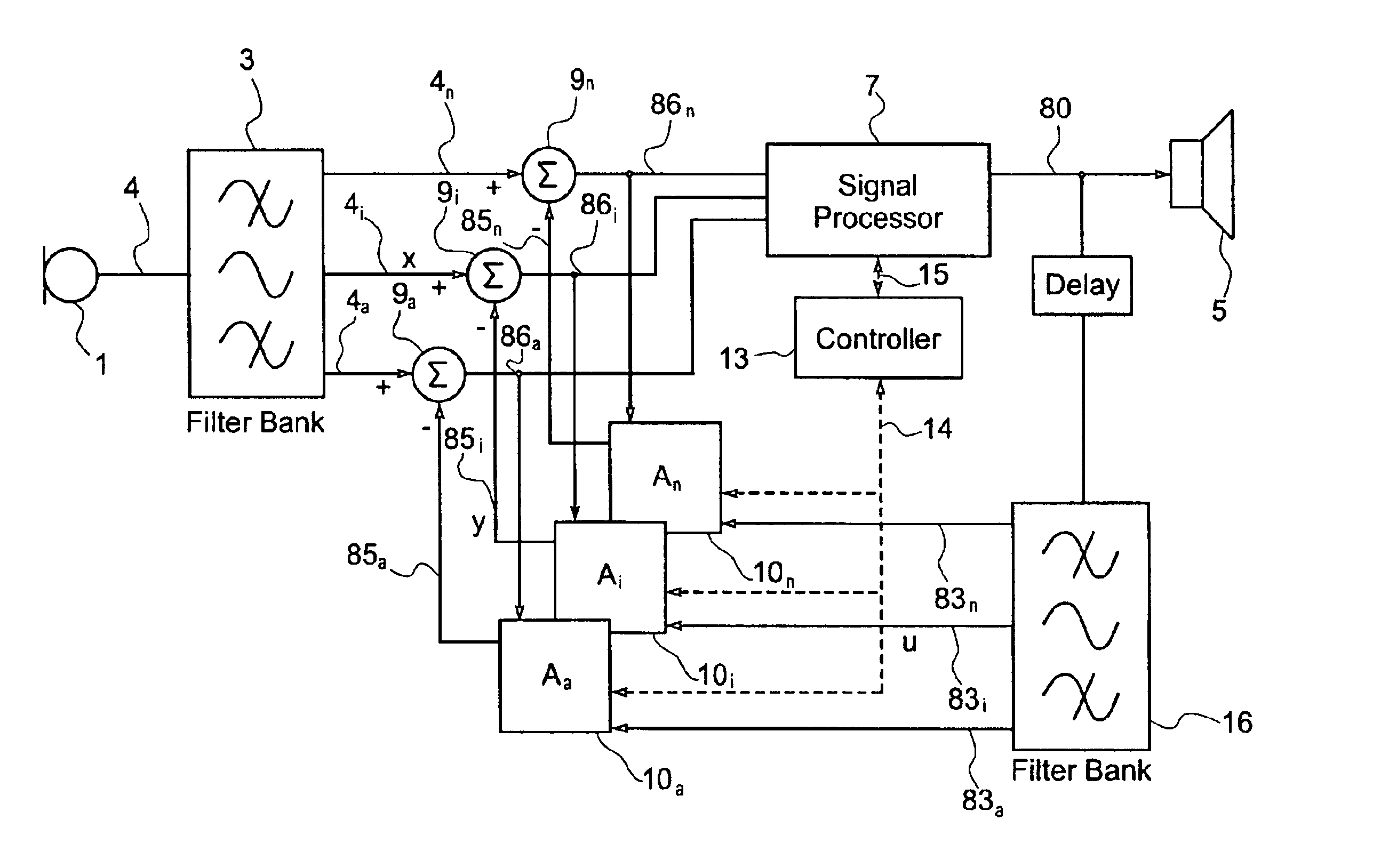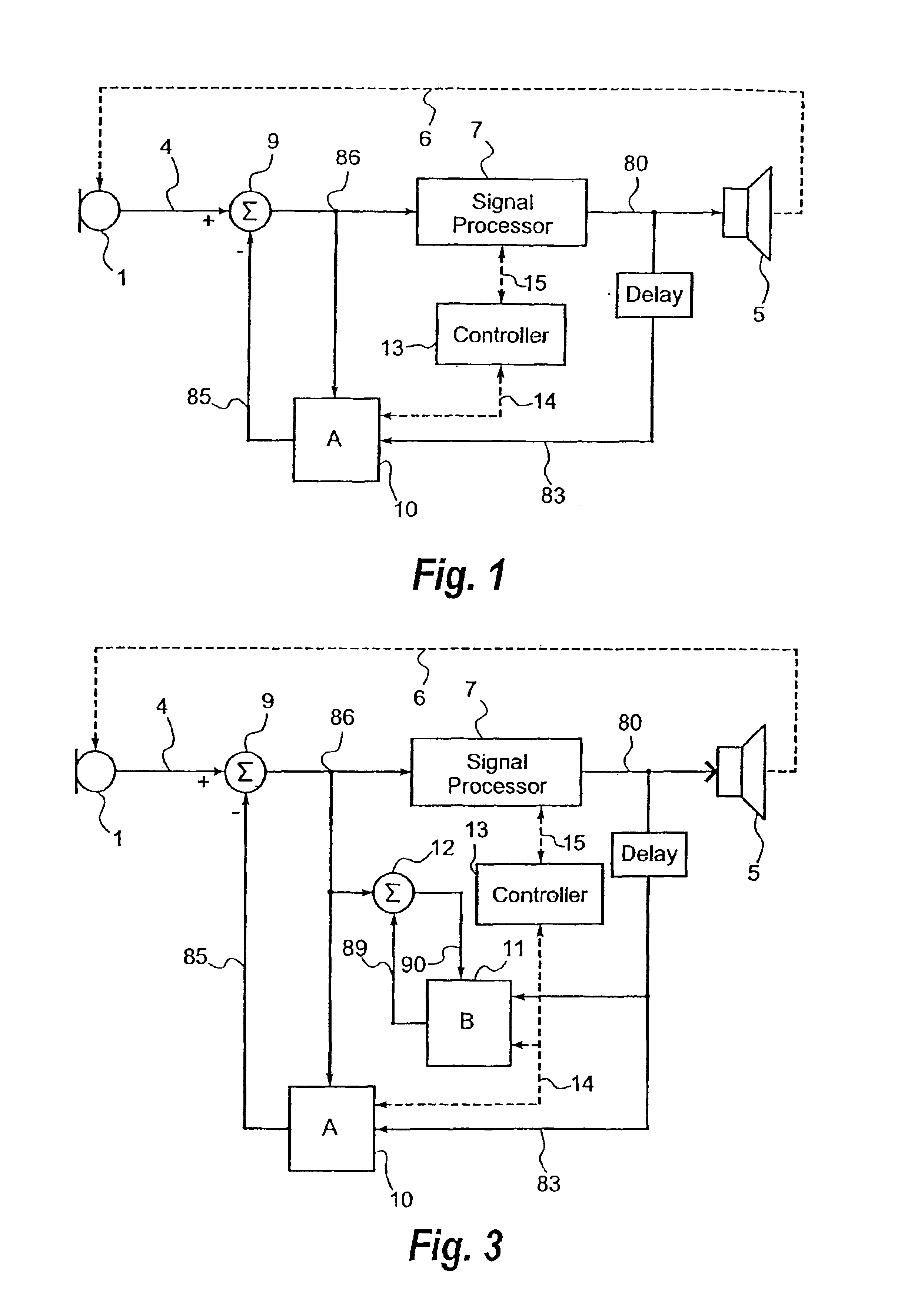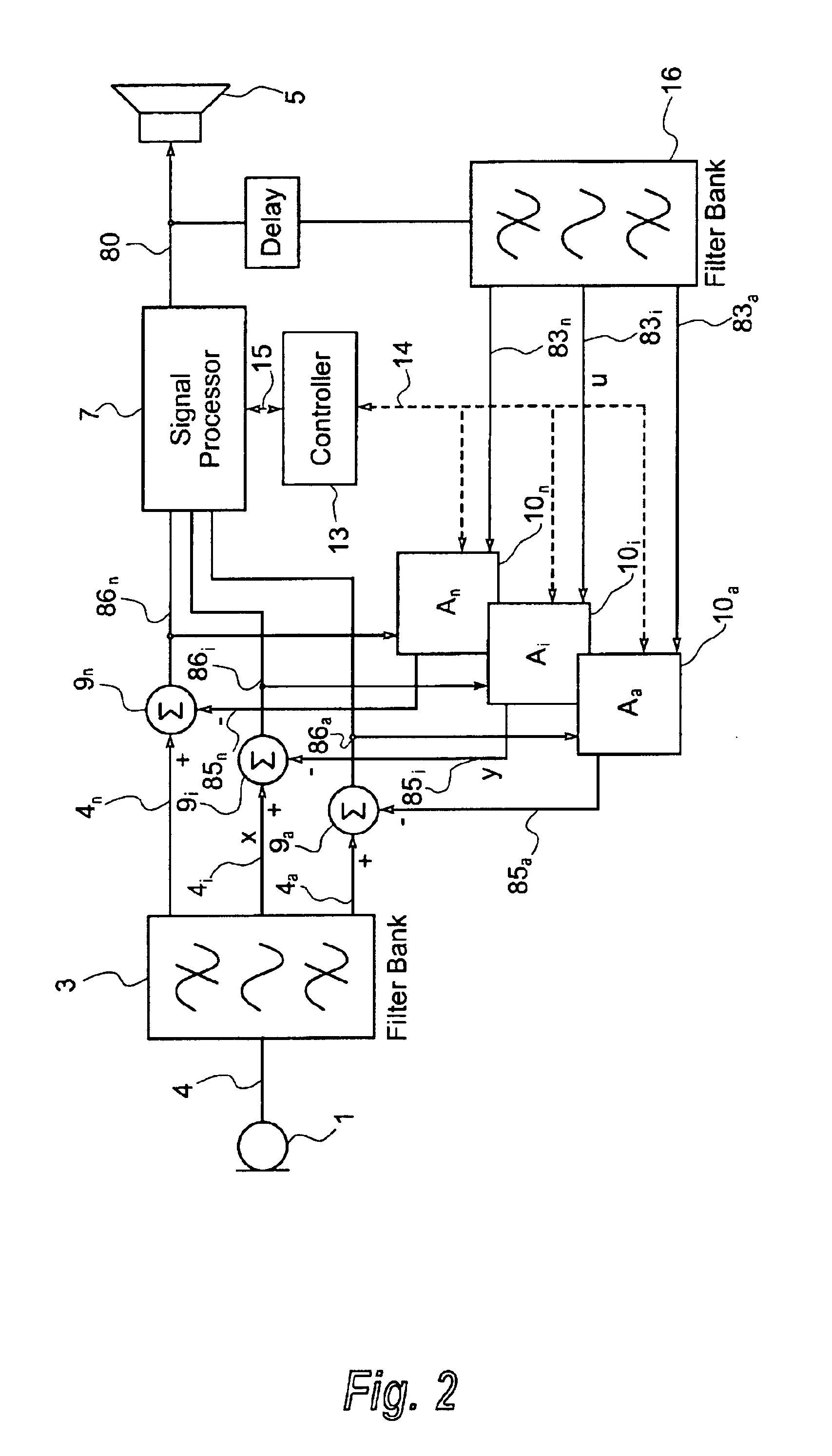[0020]It is an important
advantage of the present invention that the requirement of a gain safety margin is significantly reduced since the controller automatically adjusts a parameter of the
electronic feedback loop whenever the hearing aid operates with a high risk of generating undesired sounds so that such generation is substantially avoided.
[0021]In the following, the frequency ranges of the bandpass filters are also denoted channels.
[0022]The invention, in a second aspect, provides a hearing aid comprising an input transducer for transforming an acoustic input signal into a first electrical signal, a processor for generation of a second electrical signal by
processing of said first electrical signals into a second electrical signal, an output transducer for transforming the second electrical signal into an acoustic output signal, a first adaptive filter with first filter coefficients for
estimation of acoustic feedback by generation of a third electrical signal by filtering of said second electrical signal and adapting said third signal to said first first electrical signal, which first adaptive filter is a warped adaptive filter, wherein the first filter coefficients are updated with a first convergence rate, a set of second adaptive filters with second filter coefficients for filtering said second electrical signals into respective fourth electrical signals, and a combining node for generation of fifth electrical signals by combining the fourth electrical signals with the respective first electrical signals and for inputting the fifth electrical signals to said set of second adaptive filters, and wherein the second filter coefficients are updated with a second convergence rate that is higher than the first convergence rate.
[0023]The invention, in a third aspect, provides a hearing aid comprising an input transducer for transforming an acoustic input signal into a first electrical signal, a first
filter bank with bandpass filters for dividing the first electrical signal into a set of bandpass filtered first electrical signals, a first set of combining nodes for receiving said set of bandpass filtered first electrical signals and combining them with a set of third electrical signals in order to output a first set of combining node output signals, a processor adapted for individual
processing of each signal among the set of combining node output signals and adding together the processed electrical signals in order to generate a second electrical signal, an output transducer for transforming said second electrical signal into an acoustic output signal, a second
filter bank with bandpass filters for dividing said second electrical signal into a set of bandpass filtered second electrical signals, the bandpass filters of the second
filter bank being substantially identical to respective bandpass filters of the first filter
bank, a first set of adaptive filters for estimating acoustic feedback by filtering of the bandpass filtered second electrical signals according to a set of first filter coefficients and generating the set of third electrical signals, and a controller adapted to determine an operating gain of the processor and to adjust a first
adaptation rate of said set of first filter coefficients according to the operating gain.
[0024]In a simple embodiment of the invention, the hearing aid is a single channel hearing aid, i.e. the hearing aid processes incoming signals in one
frequency band only. Thus, the first filter
bank consists of a single bandpass filter, and the single bandpass filter may be constituted by the bandpass filter that is inherent in the
electronic circuit, i.e. no special circuitry provides the bandpass filter. Correspondingly, the adding in the processor of processed electrical signals is reduced to the task of providing the single processed electrical signal at the output of the processor. Further, the second filter
bank consists of a single bandpass filter, and the first set of adaptive filters consists of a single adaptive filter.
[0025]Typically, hearing defects vary as a function of frequency in a way that is different for each individual user. Thus, the processor is preferably divided into a plurality of channels so that individual frequency bands may be processed differently, e.g. amplified with different gains. Correspondingly, the hearing aid may comprise a first set of adaptive filters with a plurality of adaptive filters for individual filtering of signals in respective frequency bands whereby a capability of individually controlling acoustic feedback in each channel of the hearing aid is provided. Preferably, the frequency bands of the first set of adaptive filters are substantially identical to the frequency bands of the first filter bank so that the bandpass filters do not deteriorate the operation of the adaptive filters.
 Login to View More
Login to View More  Login to View More
Login to View More 


